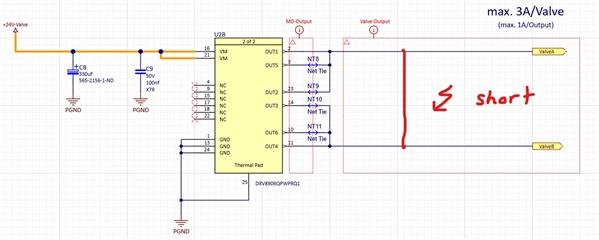Dear Team,
I have a prototype board using the TI DRV8906-Q1 grouping 2 x 3 channels in parallel. While the datasheet says "The over-current protection (OCP) ensures the device protection in any short scenarios like the phase short, phase to ground short and phase to supply short conditions", I am facing blown-up ICs (see image below) when accidently shorting PWM groups that drive 0% and 100% duty-cycle respectively.
I am using the following overcurrent protection settings, since I have a capacitive load to drive:
- PL_MODE_EN = 01b = Parallel mode OCP slow turn-off slew is enabled
- OCP_DEG = 100b = OCP deglitch time is 60 µs
Since I obviously don't want to destroy more prototypes, I would like to know if there could be any other register configuration in which the built-in OCP is not performing as expected?
Thanks in advance, Martin
Damaged DRV8906-Q1:




